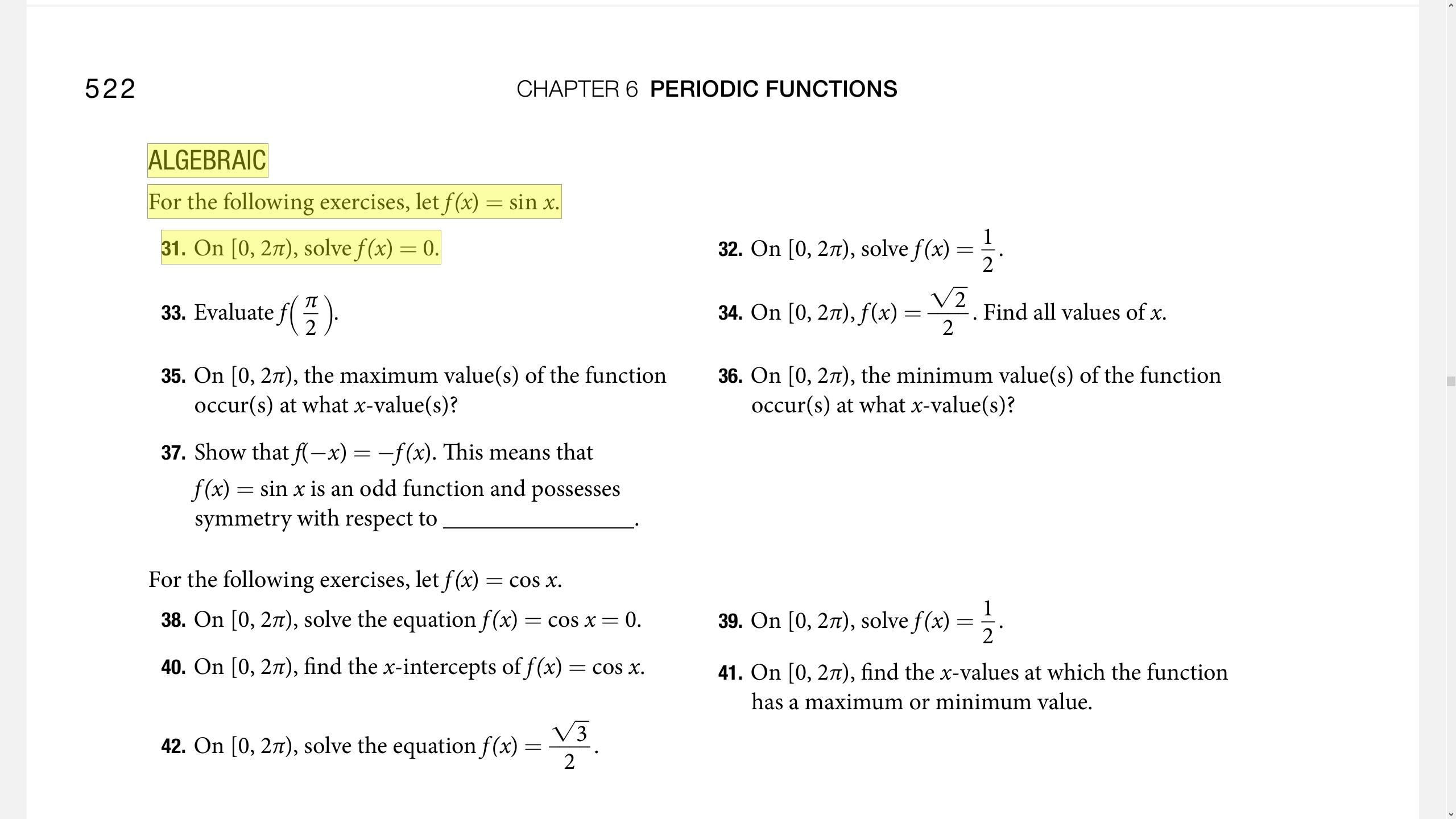I've been knocking out the trig problems in this section with minimal difficulty so far, but I've run straight into a brick wall on this "Algebraic" part. I'm asked to find sin(x)=0 between [0,2π). If I graphed the unit circle this would be a trivial exercise to show sin(θ)=0 when θ=0 or π.
Where I have trouble is- I'm very explicitly being told here that the solution is ALGEBRAIC, and I'm struggling to figure out a way to rearrange sin(x)=0 to come up with the known answer. Further, unit circles are not in this chapter, they wouldn't likely ask me to exercise a skill taught in another chapter. What am I missing?
It's not just 31, either. Looking ahead at eg 37, I can easily show sin(-x) = -sin(x) on a unit circle. I could maybe fuck around with inverse trig ratios but those are in section 3- this is only section 1.
Help me out here, drop a hint, share a link: how do I solve sin(x)=0 on [0,2π), but algebraically? I suspect it's something glaringly obvious and/or very very simple I've overlooked.

I realized in retrospect I misread the header so I apologize for that.
I'm still betting they aren't expecting a true algebraic or analytic solution here. Things like finding max/min points, finding arbitrary particular values of trig functions, solving trigonometric equations and so on can be notoriously hard in the absence of geometric reasoning/intuitions.
Later on if you decide to study calculus you might eventually see the sine and cosine functions defined rigorously via infinite series. That may sound convoluted, but part of the purpose of doing that is because of the difficulties of the issues mentioned above. Basic sounding facts like: What is sin(0.1234)? are not so easy to answer where you are at but can be dealt with more conveniently using these kinds of tools from calculus.
The questions being asked here are also just kind of typical knee jerk facts that most people want students coming out of a trig class to just know.
I think your reasoning geometrically seems very on the right track. Appealing to the unit circle or the graph of y=sinx for these feels correct in the sense of what a trig student would be expected to know coming out of or during a trig course.
Thank you that's very reassuring. I've marked this solved with your help.